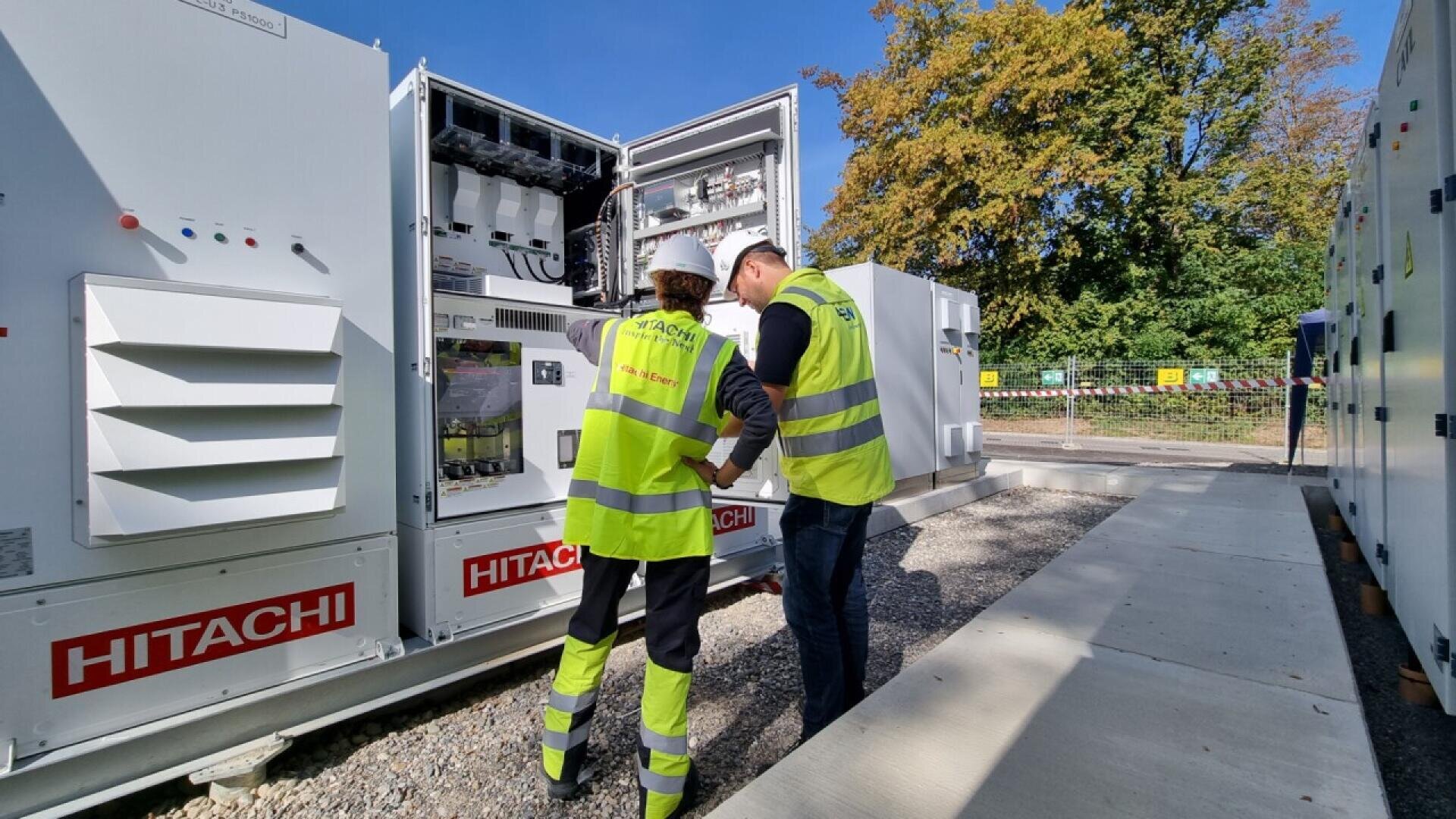Battery storage: the key to avoiding feed-in caps for renewable energies
System flexibility is the key to avoiding feed-in limitations with the targeted tripling of renewable energy sources, ensuring a stable and efficient integration of these renewable energies into the grid.
Feed-in caps are when we deliberately avoid using electricity that we could have generated from renewable energy sources such as wind and solar power. As the world seeks to progressively realise the COP28 targets of tripling renewable electricity generation capacity by 2030, we need to ensure that we waste as little of this renewable electricity generation capacity as possible through curtailment. The best way to avoid feed-in limitations is to improve the flexibility of electricity systems and balance renewables and electricity demand as well as possible.
by Gerhard Salge, CTO Hitachi Energy
The good news
Tripling wind and solar energy capacity by 2030 is a major challenge, but it is feasible if we start today. In principle, we have the technologies required to generate electricity from renewable energies on a large scale, to transport it via the electricity grid and also to store it appropriately. In addition, we are gradually improving when it comes to creating more flexible demand. We use digital platforms, for example, to manage the charging infrastructure for electric mobility, to heat hot water or to cool our homes - depending on when electricity from renewable energies is cheapest and available in large quantities.
The bad news
The path to this new energy system will not develop on its own. We need to scale up quickly and prevent delays in approvals and grid connections from causing bottlenecks that could jeopardise the entire energy transition. Accelerating the expansion of infrastructure in this way requires the commitment of everyone involved.
What is a feed-in limitation?
Put simply, feed-in limitation occurs when more electricity can be generated from renewable energy sources than the system can absorb at the same time. This could, for example, be because there are not enough storage options to store the electricity generated from all renewables when feed-in is at its highest and demand is lower. Or the cause could be an overload of the electricity grid - i.e. a lack of transmission capacity to transport the electricity from the point of generation to where it is needed or can be stored.
Due to the variability, certain restrictions are unavoidable, particularly in the case of very high generation of electricity from renewable energy sources. These are normally short, temporary situations. However, if the feed-in limitations in an electricity grid increase systematically, this is a sign of a systemic imbalance. While investment in renewable energy sources is increasing, the need for investment to maintain this balance in order to minimise feed-in limitations is also increasing. And we have already seen that the increase in the proportion of electricity generated from renewable energy sources can lead to restrictions in the entire electricity supply system — unless investments have been made in appropriate technologies.
Last year, more than 560 billion dollars were invested in renewable energies. According to Jenny Chase of Bloomberg NEF, to triple the share of renewable energy, we need to spend an average of about $1.2 trillion annually on renewable energy to reach the net-zero target.
To ensure that the energy transition develops at a pace that supports our climate goals, we need to ensure that the energy system becomes increasingly flexible to utilise these resources and minimise constraints.
Flexibility is the solution for feed-in limitations
My colleagues Alexandre Oudalov and Jochen Kreusel from Hitachi Energy, together with Albert Moser, Professor at the Institute for Electrical Systems and Grids, Digitalisation and Energy Economics at RWTH Aachen University, recently published a two-part series explaining why flexibility of the electricity system is a key factor in the energy transition — and how excessive curtailment of renewable energy use can be avoided.
In a nutshell:
Flexibility allows an electricity system to cope with fluctuations and uncertainty at all times - two factors that are increasingly becoming a reality as our electricity system is increasingly fuelled by weather-dependent, renewable energy sources. Supplying the residual load is becoming more important and complex than ever before. Flexibility tools are key to keeping the rapid variability of the future sustainable electricity system under control.
A flexible energy system has four dimensions, all of which are controlled by digital technologies:
- Flexibility on the generation side:
Renewable energy sources such as solar and wind generate electricity in a variable way depending on the weather, in contrast to conventional, controllable electricity generation. This variability requires digital management tools such as planning and forecasting and, if unavoidable, limiting feed-in. - Demand-side flexibility:
As on the generation side, significantly greater variability and less predictability can be observed on the demand side. Electric vehicles and electric heating and cooling offer flexibility potential, and decentralised generation is increasingly linked to demand. The trend is for flexibility on the demand side to be increasingly managed by aggregators who commercialise their services. - Energy storage:
Traditional storage has predominantly been via large centralised pumped storage power plants, but modern solutions include the addition of battery energy storage systems (BESS) of various sizes to the system, with the technological focus on lithium-ion technology. However, additional storage technologies for seasonal flexibility are still being researched and developed. - Networked, controllable electricity transmission and distribution systems:
Supra-regionally networked electricity systems utilise flexibility resources efficiently together and thus reduce the need for individual flexibility measures. In order to improve the flexibility of the electricity system in Europe, the EU, for example, is calling for an increase in cross-border interconnection capacities. Interconnectors also facilitate the integration of renewable energy sources and are of crucial importance for reserve electricity markets.
- Digitalisation as a catalyst in all dimensions of electricity system flexibility:
Digitalisation is key to the secure operation of a flexible, sustainable energy system. It enables the system to comply with energy market rules and maximise efficiency. Digitalisation makes it possible to securely connect all types of components to control centres and enables reliable and resilient overall system management. Digital tools and technologies are crucial for the overall planning, short-term forecasting and real-time operation of energy systems.
All in all, flexible systems will help us make the most of the electricity we generate by tripling renewables — keeping the energy transition on track.
When we talk about feed-in limits in this article, we are referring to the «active restriction of variable renewable energy sources (VRES)».


